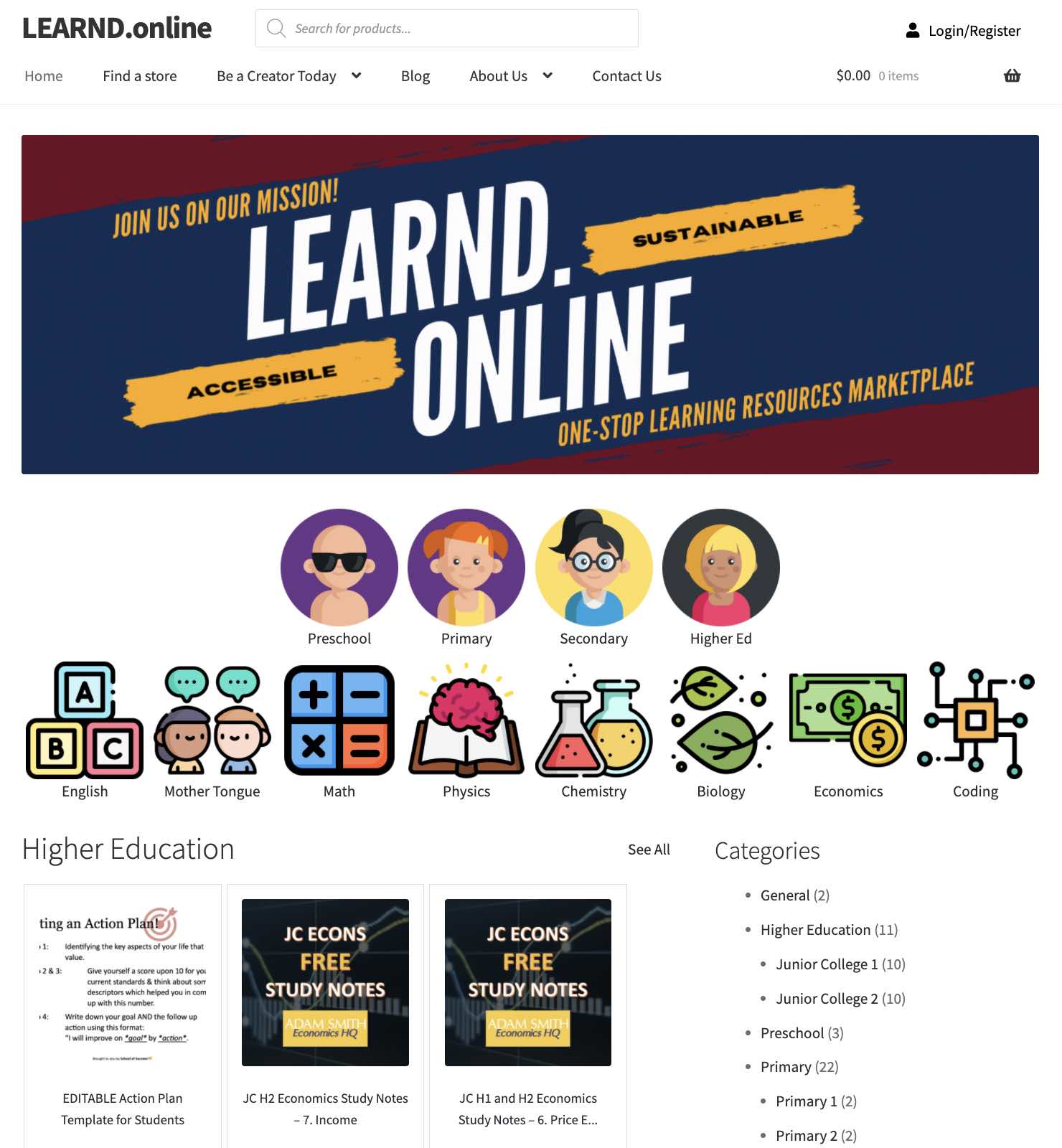
In recent times, the word “sustainability” holds two meanings: (1) from a resource point of view, if the mentioned approach can withstand a long term deployment and (2) from an environmental standpoint, if the matter of discussion can help to contribute to maintaining the habitability of our planet. With the rising concerns over climate change (thanks to the various awareness campaigns), we now better appreciate the importance of taking actions NOW in order to safeguard our (not-so-far) future. In this post, we shall share our view on the more sustainable approach to the use of learning resources through LEARND.online.
Why Learning Resources?
To be honest, the key impetus to select the education field is not due to environmental concerns but rather our passion for education. Nevertheless, from our experience, we know that a large amount of printed learning materials goes to waste each year.
A quick look into the list of waste produced and recycled in our small island-nation Singapore alone, we see that paper/cardboard waste is the top waste generated in 2020 among the 14 categories of waste listed (see image below). With a total mass of 1,144,000 tonnes, the amount of paper waste generated is equivalent to the mass of about 100,000 double-decker buses! What makes the matter more concerning is that we have only achieved a recycling rate of 38%, making it the 2nd highest disposed waste after plastic.
As ex-teachers, we are very familiar with the amount of paper waste generated from unfinished ten-year series, old textbooks and unfinished/uncollected worksheets. Each year-end, we use trolleys to ferry stacks of papers and you will notice numerous recycling bins filled to the brim with these wastes. Truth-to-be-told, the photocopying room in each school is almost always busy (and we have to outsource this printing service to external vendors which will allocate one headcount for this position of photocopying worksheets for teachers). We never felt good about the wastefulness, but considering the circumstances, it seemed pretty inevitable for the needs of our students…
Until COVID-19 challenged us to rethink our approaches.
What has Changed?
With COVID-19 and home-based learning, we are forced to deal with a situation where learning resources have to go digital. Teachers and students are made to scale the steep learning curve in teaching and learning online. “Hardcopy” notes and worksheets have to be uploaded and downloaded in “softcopy”. Since there was no way to feasibly send physical worksheets and collect them, everyone has to adapt to the digital way of completing, submitting, grading and returning assignments through the net. Furthermore, we have also pushed to ensure that each student possesses a learning device (usually a Chromebook) with sufficient processing capabilities to handle these tasks.
The More Sustainable Approach
It is crucial for learners to get used to writing answers and attempting questions on pen and paper. In fact, studies have suggested that writing aids stronger cognitive engagement as compared to typing. Yet, with the improvement of on-screen writing technology as well as the exploration of digital examination, the relevance of pen-and-paper practise is put into question.
While technology continues to improve and the education fraternity test and explore the feasibility of a fully digital approach, the more sustainable approach will be to make digital copies of learning resources available and should the learner prefer, they can be printed on-demand. With this arrangement, we can not only minimise the absolute number of paper used but also ensure that should the resources be printed, it is on purpose and should therefore be put to good use.
As such, we have developed LEARND.online to encourage an increased uptake of digital learning resources. We hope that through a virtual marketplace, we can provide an alternative to traditional brick and mortar bookstores. Like a specialised mall filled with stores that provide learning materials, LEARND.online strives to empower more education content creators to set up stores with a simple few clicks while enabling shoppers to either window shop for interesting learning resources from the featured page or zoom in to what you need through the search tab. If you are an educator (or even a student who creates beautiful handwritten notes), why not share digitise and your learning resources with a wider audience (and earn some passive income)? If you are a student/parent, what’s better than buying a hardcopy book is that… should you/your child like to redo a specific practice, just simply redownload/reprint the assignment!

We view sustainability as a responsibility that we have to uptake both at the corporate and the individual level. We are working on it. Are you ready to play your part?
Support a more sustainable approach to the use of learning resources and visit us today at https://learnd.online!
******
LEARND.online endeavours to leverage technology to make learning resources more accessible and sustainable. As an online learning resource marketplace, we aim to empower educators and even learners to share amazing self-created learning resources with those in need. You can find cheatsheets, notes, practices, study guides, mindmaps, lesson plans, free test papers and more anytime, anywhere, without the need to purchase prints (which damages our environment). Sign up is entirely free! Visit us today and thank you for your support.
LEARND.online — Online Learning Resource Marketplace
[…] a post on how we contribute to a more sustainable approach to the use of learning resources (link here). In this follow-up post, we will like to share how LEARND.online contributes to making learning […]